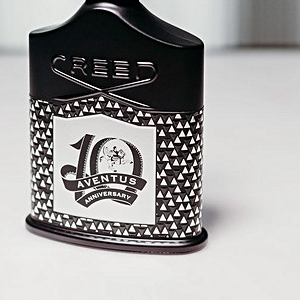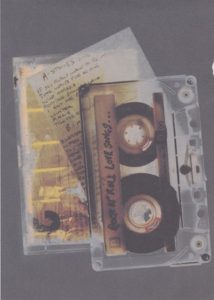[Un]Natural: The 100th Birthday of a Urinal
By Jo Phillips

The term ‘Readymade’ provokes a visceral reaction. In the hundred years since the creation of Duchamp’s Fountain, this instinctual response has remained as deep-set as ever. Named a joke, anti-art, the death of art, unimportant or the cornerstone of contemporary art, audiences stand in staunch opposition to each other. Although it’s not the first example of a readymade (see Bicycle Wheel (1913) and In Advance of the Broken Arm (1915)), this is the most canonical work.
Through his readymades, and particularly Fountain, Duchamp aimed to cut-away the category of aesthetics from art, leaving only the conceptual. In doing so he raises questions challenging the purpose and nature of art, and the importance of individual creativity.
The Fountain was sent to the ‘Society of Independent Artists’ for their exhibition at the Grand Central Palace in New York in 1917. The board (of which Duchamp was a member) rejected it on grounds of vulgarity and offence, much against the rules, which stated that all artworks would be accepted from artists who paid the fee. Entered under Duchamp’s pseudonym ‘R. Mutt’, the very act of rejecting it groundlessly illustrates that at the time the piece functioned just as Duchamp wished. If the provoking artwork was accepted as a piece that deserves a place in a museum or gallery it would no longer provoke; it would no longer challenge the status quo. In reeling against the idea of individual artistic creation, Duchamp provokes an art market which often reads the quality of work based on its signature. In signing an arbitrarily chosen “commonplace and dull” mass-produced item, the artist mocks any claim to individual creativity in the art world.
Weather audiences love or loath the Fountain, it cannot be stripped of its canonical status in the history of art. The contemporary idea of ‘Conceptual Art’ owes everything to Duchamp. In terms of influence, it’s not a wild statement to suggest that Duchamp’s influence on conceptual art was akin to the Beatles influence on music.
So, which artworks owe their existence to a urinal? We’ve picked a few of our favourites for you.
Michael Craig-Martin, influencer, artist and teacher of the YBAs certainly has a debt to Duchamp. At the age of 12, after discovering the work of Duchamp and his followers, Craig-Martin was subject to a radical and revolutionary area of art which had a lasting effect on him. He understood that Duchamp’s revelations had completely changed the reference point. As a result, as a young artist he made pencil sketches of readymade objects, soon after completely dismissing drawing as a valid medium. Like Duchamp, he rejected the notion that art had to be beautiful or contain aesthetic value, following the same line of reasoning to create artwork. Firstly, these artists believed that the act of choosing an object in the first instance was a creative act. Then, by cancelling the useful function of the object it became art. Finally, by presenting and adding a title (and sometimes more), the object was given a new meaning.
Craig-Martin’s most famous piece – An Oak Tree (1973)– is, in terms of concrete matter, a glass filled with water, atop a small shelf. With it, he created a mock Q & A with the artist, claiming that he had changed the glass of water into an oak tree without altering its matter. Like Duchamp, he takes pleasure in shocking audiences, in provoking them into dialogue.
Another artist who comes under the Duchampian influence is Ai Weiwei. Photographer, sculptor, curator, architectural designer, cultural and social commentator, Ai Weiwei is the leading Chinese artist. To begin with, the very fact that the artist comes from the East, yet asserts an almost unparalleled influence on Western artists, challenges the very concept of ‘The History of Western Art’.
Remembering (2009) is one of Weiwei’s most important and sentimental works. It’s a 10x100m installation made up of 9000 backpacks displayed on the face of the Haus der Kunst in Munich, Germany. Each backpack represents a life lost in the 2008 earthquake in the Chinese province of Sichuan. The artist uses five bright hues to colour the piece, writing the sentence “For seven years she lived happily on this earth”. This was a phrase used by a mother of a victim to commemorate her daughter. For his outspoken criticism of the Chinese government, Weiwei has been interned, imprisoned, placed under constant surveillance and for a time had his passport revoked.
But what’s happening today?
Well, the boundary-busting collective JakBox are paying homage to Duchamp’s Fountain. From Monday 17th April, creator of JakBox, Simon Williams, will be showcasing his work ‘Under the Hammer’. Every Monday at 11am, one piece of work will be put up for auction with no reserve price. Either the work will be bought (for as little as 1p) or it will be destroyed, filmed and posted on their website. The pieces will be near replicas of already established work. Like Duchamp, Williams asks questions of originality and value. No matter what your position on conceptual art, this promises to be worth a watch. If you hate it, you can look on while the work fails to hit the 1p bid, or; you can buy a piece for a ridiculously low price. Well, theoretically at least.
The exhibition runs from April 17 for 17 weeks.
All photos courtesy of JakBox.






